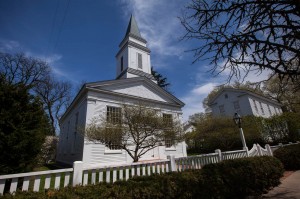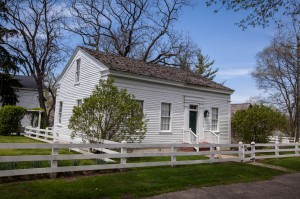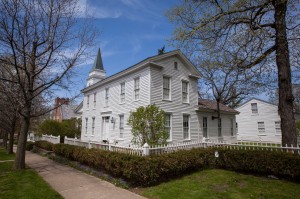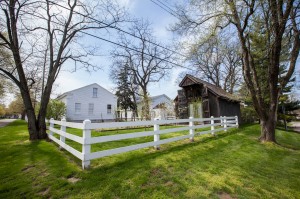Schools
The first efforts at teaching in the tiny village of Attica were probably carried on in private homes, but a one-room, log schoolhouse with puncheon seats was soon erected within its bounds on the northwest corner of what is now the library yard (Washington Park). Here, in 1832, Thomas McFerren became the first school master of the community.
In 1839, a frame schoolhouse was built on a lot at 303 South Brady Street. A one-story brick schoolhouse was erected in 1849 at 502 South Perry Street. The lower story of the brick house now standing there is the schoolhouse remodeled. This building came to be called the South Brick to distinguish it from the Canada Brick, which was put up in 1851. The older children, called the high, were placed upstairs in this building, but a nearby frame building located at 210 Avenue One was known as the McDonald Academy.
None of these educational ventures already named were supported by public taxation, hence it came about that the three-story brick building known as The Old School Building, erected in 1867-1869 was put up far from the other building. It originally contained rooms and a chapel, or community hall, at the top. Wood stoves were used for a number of years.

Elementary School

Jr. & High School
The first public school commencement was held amidst the great excitement of the community in 1873, when a single graduate, Alice Rogers, received the first Attica High School diploma. By 1907, the growth of the school warranted a second building, but this, twenty (20) years later, was incapable of holding an educational plant of about one thousand (1,000) students. In 1909, a combination grade and high school was built and in 1926 a new high school was erected to take the place of the 1867 building.
Logan, Davis, and Shawnee Townships consolidated with Attica Schools in 1962 for their schooling. In 1968, the first school build expressly for elementary school children was begun, and in the winter of 1970, the present grade school opened its doors for all elementary children in the three (3) townships. In December, 1973, the building housing the high school burned and a new structure was built at the south edge of the city on property given to the system by the Harrison Steel Castings Company. It accepted its first students in August, 1977.








